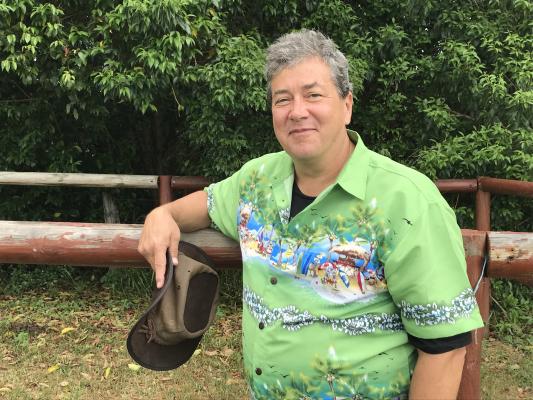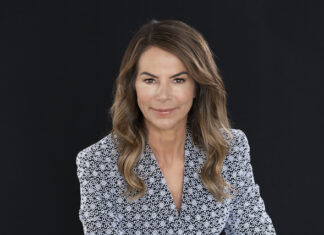Two years after taking on the voluntary role of chair of Noosa Biosphere Reserve Foundation Noosa Today chats with Rex Halverson.
Can you tell us briefly about yourself, what brought you to Noosa and why you took on the voluntary role?
I was born and raised in Southern California but my work has taken my family all over from the USA to the UK, Europe, Russia, China and finally Australia in 2008. As an expat my eldest enrolled in an International Baccalaureate program in England and wanted to continue in Australia. Landing in Maroochydore, we became involved in productions with the Noosa Arts Theatre and naturally fell in love with this place.
Having lived in Southern California I saw firsthand how an area can suffer from unbalanced development that robs the community of the very reason they wanted to live there in the first place. When the opportunity came to be involved in helping to progress a more sustainable approach in the Noosa Biosphere, I was determined to put my hand up.
NBRF has changed the way it operates now, can you briefly explain it’s role in the community and how it operates.
The NBRF is a not-for-profit organisation established by Noosa Council to enhance the biosphere reserve through research and projects that align with the UNESCO Man and the Biosphere Program. Our new model is to seek out projects and innovative ideas needing proof of concept research and/or seed funding and then search for funding.
While council continues to provide operational funding, and we can still apply for project funding, we are committed to finding external funds from a range of sources. Combined with in-kind contributions and project management, we’re able to deliver a high return on investment for the Noosa community.
Our new model of developing projects takes a collaborative community approach. Depending on the project, we may bring together on-ground groups and key individuals with university, expertise resources and local agencies to identify gaps in existing knowledge or actions and define priority actions needed. We then find funding and deliver a project or undertake research which is used to inform Noosa Council planning and best management practices.
This new approach was successful in developing a roadmap to save local koala populations and we’re now actively seeking funding to implement these actions. In November, we will undertake the same approach to develop a roadmap to conserve the Glossy Black-Cockatoo habitat.
What do you think is the greatest value of NBRF to the people of Noosa?
There are only a handful of UNESCO biosphere reserve sites in Australia, including Noosa. Our recognised balance between people and place doesn’t happen by chance. It’s the result of a whole-of community approach to sustainable development and a commitment to ongoing research, monitoring and education to maintain and nurture the living systems within it.
Our volunteer expertise-based board is made up of a diverse group with broad and deep experience, and a shared passion for the Noosa region and its people. It’s a free think tank if you will, that adds in-kind value and expertise to every project we undertake and help manage.
The NBRF through its biosphere reserve status facilitates and enables innovative approaches to conservation that has real, lasting impacts on how we live and interact within our environment. Through our projects, we’re linking community groups with research institutes and government agencies to progress research that impacts policy and management decisions, improves on-ground actions and kickstarts further investment in our region.
We aren’t just focused on environmental best practice, we consider the social and economic benefits and sustainable outcomes in our projects and priorities. This is, in essence, the principle of the UNESCO Man and the Biosphere designation.
What NBRF projects have you seen completed over the past two years and what have been their outcomes?
We have completed a number of projects in the last two years, with more due by the end of the year. Notably, these include the delivery of the Noosa Trail Masterplan, the Noosa Hinterland Rural Enterprise Plan, the Noosa River Biodiversity Study and Keep it in Kin Kin (Phase 2) erosion remediation works, the establishment of the Noosa Environmental Educational Hub and the ZEN Business Solar Case Studies. The final reports on the Noosa River Oyster Restoration Trial, Koala Forever Noosa and the Noosa Environmental and Cultural Learning Trail are also in progress. We’ve also engaged a study of oyster species with Griffith University and have some new projects in development.
The outcomes gained through these projects has been three-fold. The information and data gathered has informed council planning and management as well as assisted local organisations in their on-ground actions. The initial seed funding and pilot studies have also been key to attracting further funding commitments. The successful Oyster Reef Trial was a catalyst to a $2.4m partnership between Noosa Council and The Nature Conservancy in permanent oyster reef restoration and in recent weeks has attracted further federal funding to upscale the project. In recent weeks we’ve also seen state funding committed to the first stage of implementation of the Noosa Trail Masterplan strategy.
These investments have substantially increased our return on investment on behalf of the community. Specific project outcomes are available on our website.
Do you think the Noosa community engages with NBRF and understands what it does?
There is always room for improvement in this area and we are committed to increasing our community engagement and education activity. As volunteers, we’ve focused our resources more on delivering good outcomes than telling our story, however we recognise that the more the community understands the value of the Noosa Biosphere and the MaB Programme the more we can achieve together. In fact, we’re excited to be hosting a luncheon in November to raise funds for our initiative to protect the Glossy Black-Cockatoo.
What has been the impact of Covid-19?
As you’d expect, it’s slowed down the delivery and execution of projects. One of the biggest impacts was on our university partners as research labs and other facilities were in some cases closed, and field work was impacted. We also had to postpone launching new initiatives such as the Glossy Black Symposium and Luncheon to November. The good news is, we are back on track and will report on the symposium and future projects as they develop.
What do you hope NBRF can achieve over the next five years?
With a new Executive Coordinator to support the delivery of our program, we are excited for the future. Our goals are to increase the number of new projects for Noosa while at the same time leveraging our seed funding even higher than our current average ratio of 3:1. We’re implementing our fundraising strategy and we have a strategy to deepen our engagement with the community. We will continue implementing our new collaborative model and using this as a mechanism to define projects that will have a real impact on how we maintain the Noosa Biosphere.
We’re working on strengthening our partnerships with other agencies in Noosa and have enjoyed collaborating with Tourism Noosa on their recent Enter the Biosphere campaign. We will also be focusing on improving alliances with our neighbouring Great Sandy Biosphere Reserve, as well as the new Australian Biosphere Alliance and the Pacific Man and Biosphere Network.







